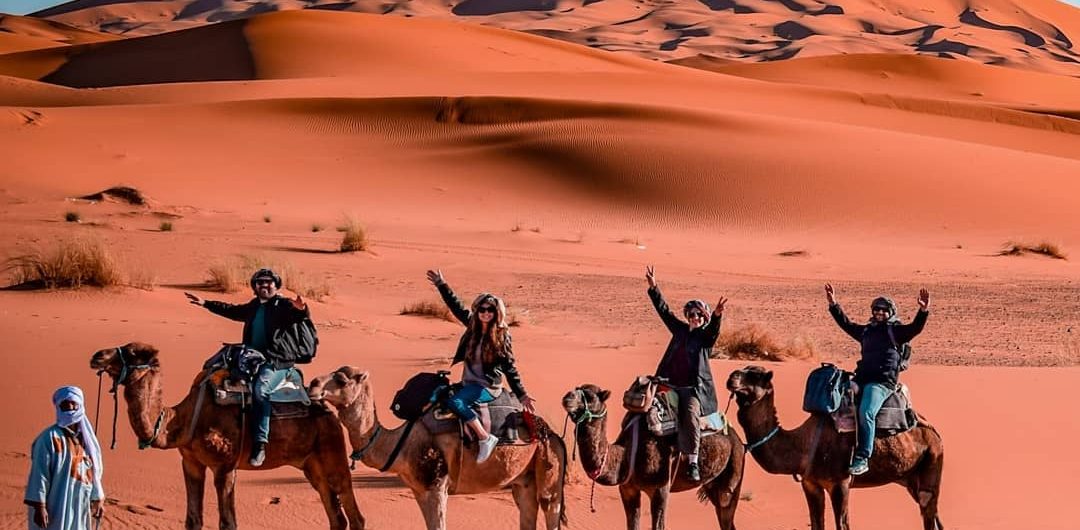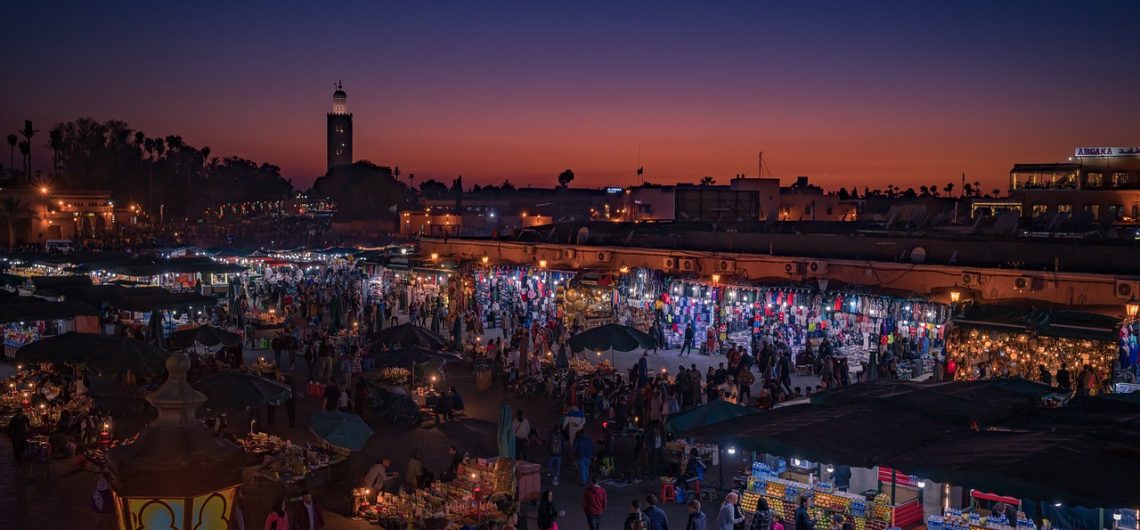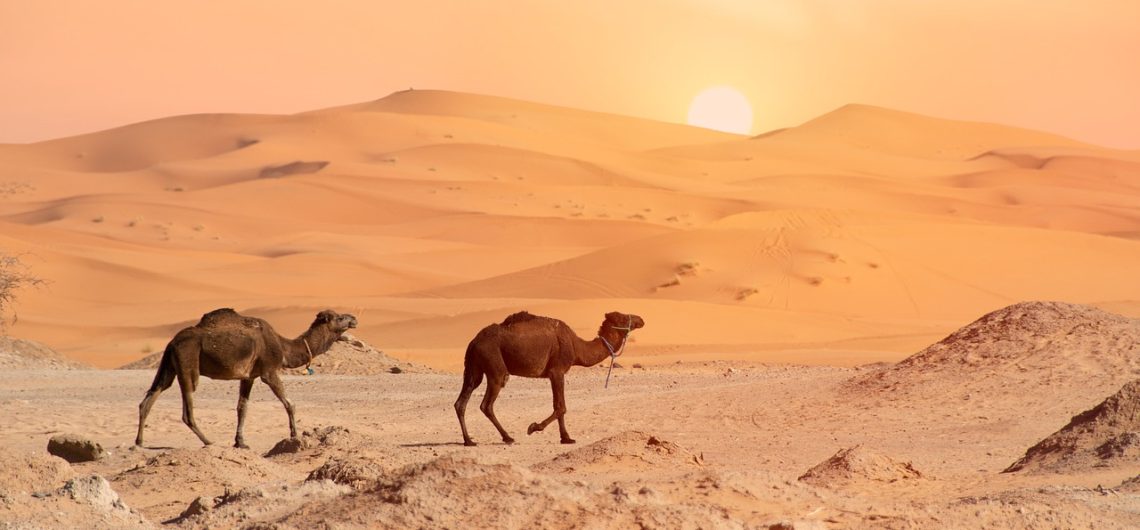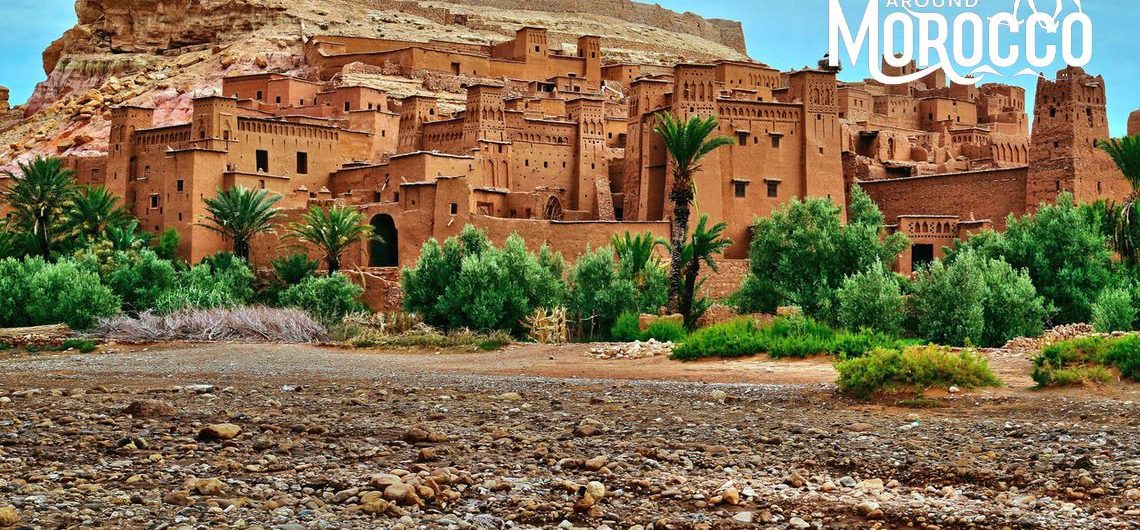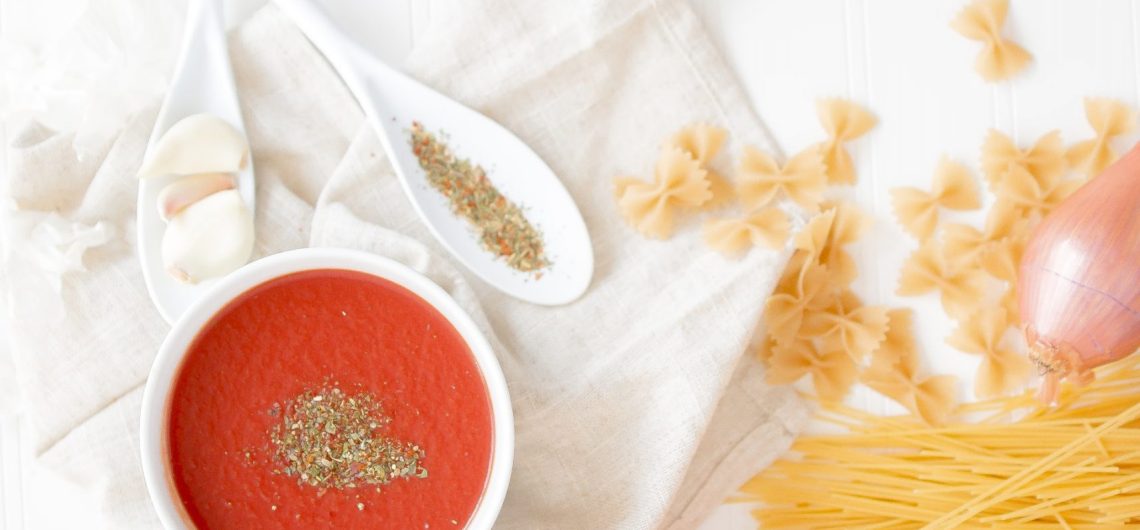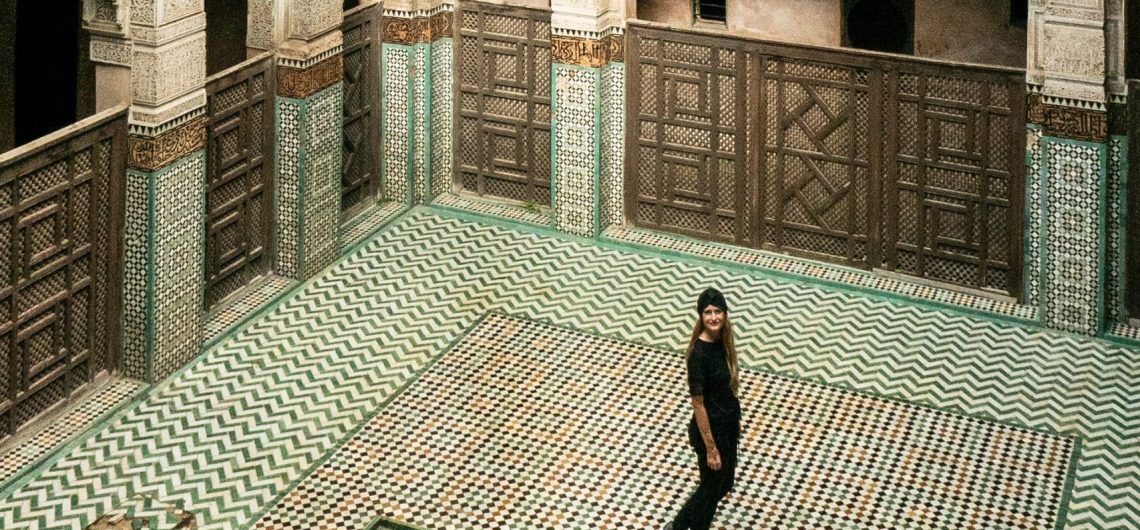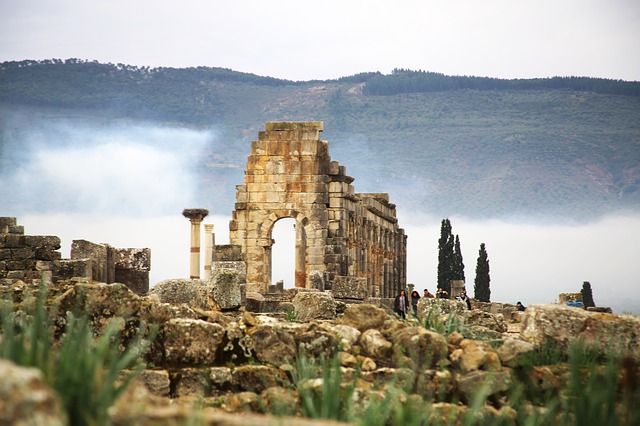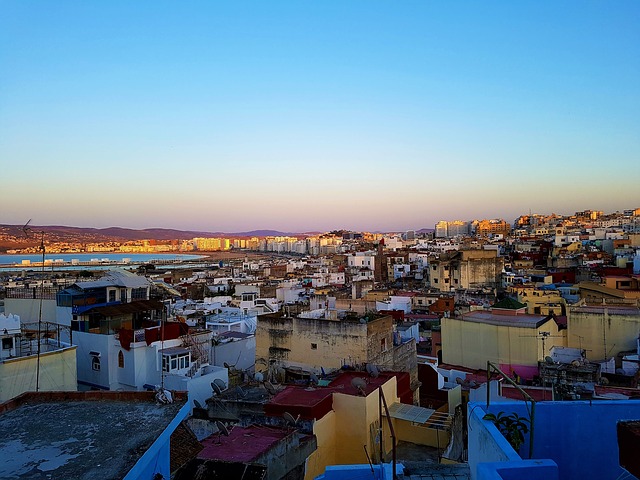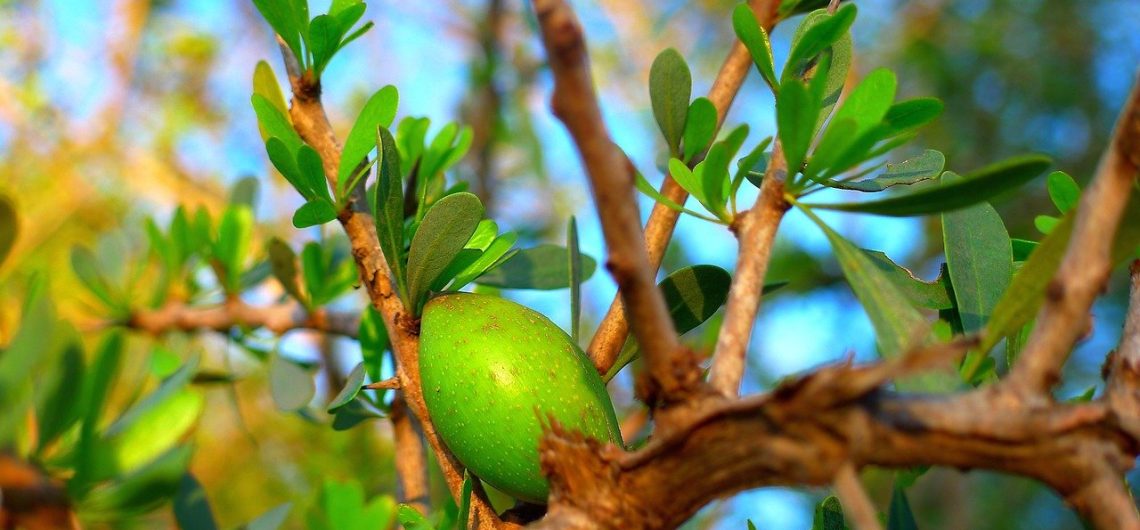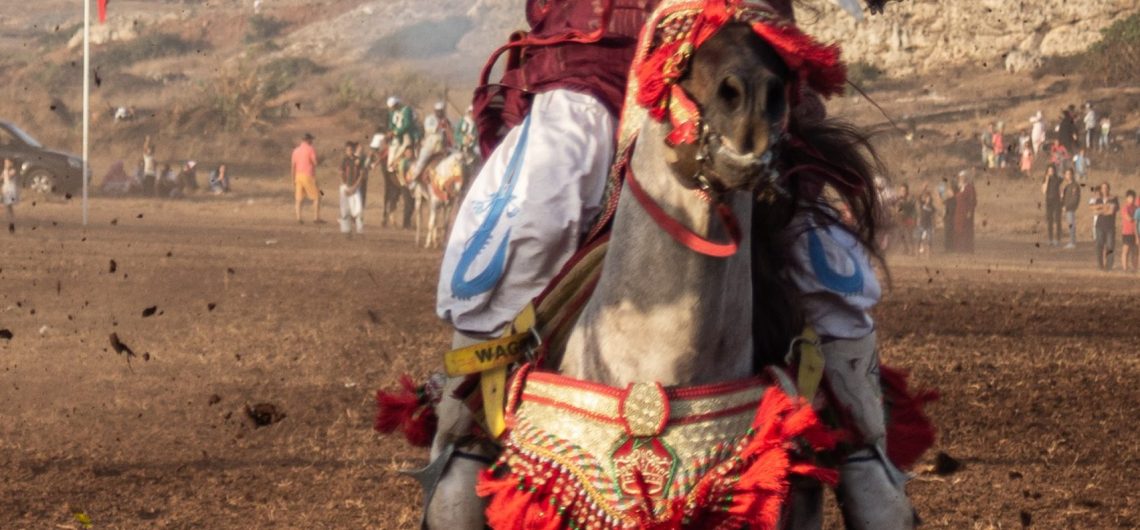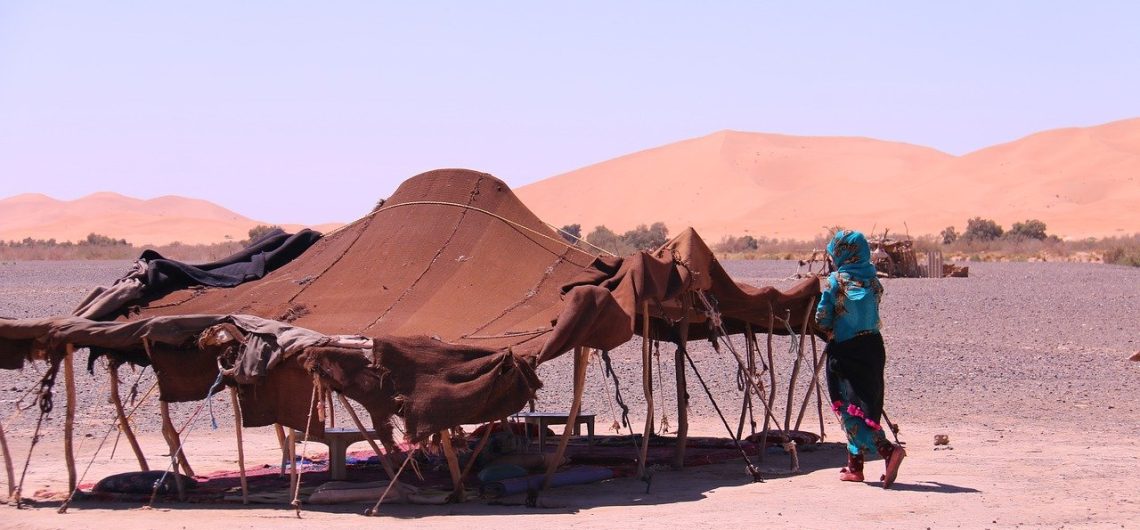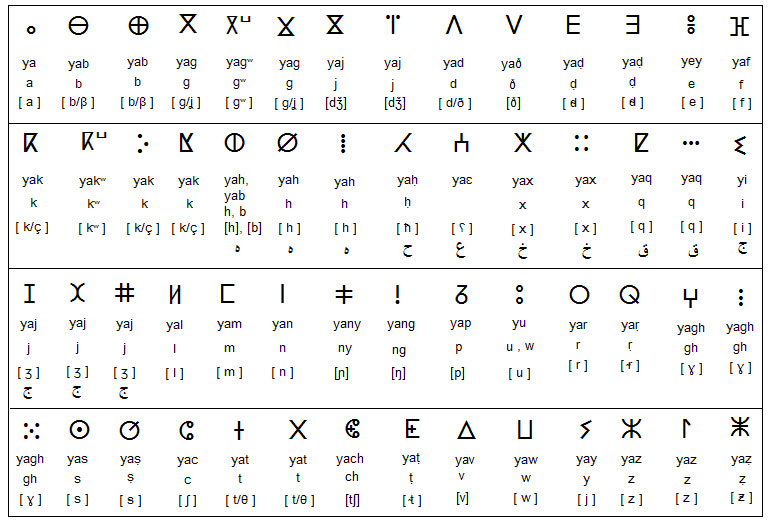What are the greatest spots in Morocco to ride a camel?” Would you believe this is one of the most commonly asked questions by potential Trips around Morocco tourists when arranging their vacation to Morocco? Trips around Morocco is excited to share our Top 7 Best Places to Ride a Camel in Morocco right now! The countdown has begun!
1- Visit Merzouga and ride a camel (Erg Chebbi dunes)
Erfoud is the starting point for Sahara treks into Merzouga, the same as Zagora is for Sahara tours in that area (Erg Chebbi dunes). Merzouga is accessible from both Fes and Marrakech and is frequently included as part of a Sahara Desert vacation in Morocco. It is a wonderful route to travel between these two old Moroccan imperial capitals, with breathtaking scenery at every turn.
In Merzouga (Erg Chebbi dunes), where can you ride a camel?
Riding a camel in Merzouga (Erg Chebbi dunes) is most commonly done as part of a Sahara desert inn or desert camp stay.
Why is Merzouga (Erg Chebbi dunes) among the top 7 greatest spots in Morocco to ride a camel?
Please start the drums! Because you’ll be in the Sahara Desert, Merzouga (Erg Chebbi dunes) takes the top rank on our list of the 7 greatest places to ride a camel in Morocco. Because Merzouga is the only place in Morocco where you can ride a camel with well-developed tourism infrastructure, you have a wide range of options for a camel ride, from basic and rustic desert inns and camps to rock-star “glamping” (“glamorous camping”) at deluxe and luxury hotels and desert camps!
2- Near Zagora / M’hamid, ride a camel (Erg Chigaga dunes)
In the Draa River Valley, Zagora is about a day’s travel southeast of Marrakech. It serves as the starting point for Sahara Desert hikes to the Erg Chigaga dunes near M’hamid, Zagora region. Tamegroute’s rustic green ceramics is well-known in the area.
In Zagora / M’Hamid (Erg Chigaga dunes), where can you ride a camel?
Riding a camel in Zagora / M’Hamid (Erg Chigaga dunes) is most commonly done as part of a desert camp stay. We recommend arranging a Sahara desert tent as far into the sand dunes as possible, rather than simply around Zagora, for the finest experience. You should check with them to see if a camel ride is included and how long the ride will go.
Why are the Erg Chigaga dunes in Zagora / M’Hamid among the top 7 greatest places to ride a camel in Morocco?
Because it is in the Sahara Desert, Zagora / M’Hamid (Erg Chigaga dunes) comes in second on our list of the 7 greatest places to ride a camel in Morocco. The views are amazing as you go from Marrakech across the dazzling and occasionally stomach-churning Tizi n’Tichka High Atlas Mountain pass.
Because this is a popular site for camel rides in Morocco, you’ll have a variety of options for lodging. Because its sand dunes aren’t as impressive as Merzouga’s, Zagora / M’Hamid (Erg Chigaga dunes) isn’t ranked first (Erg Chebbi dunes). We recommend breaking up the travel between Marrakech and Zagora with an overnight stop due to its distant position.
3- Go camel riding in Dakhla
Dakhla is a Moroccan tourist attraction on the rise. It is situated in Morocco’s far south-western region, along the Atlantic Ocean, and is close to the Mauritania border. Dakhla is famed for its wind, which attracts windsurfers and kitesurfers from all over the world to participate in these activities, particularly in the beautiful lagoon! Did we mention how windy it is? You’ll want to keep your hat on if you don’t want to lose it!
In Dakhla, where can you ride a camel?
In Dakhla, the easiest method to ride a camel is to book it as an activity, which is usually done through a kite and surf camp.
Why is Dakhla one of the top seven finest spots in Morocco to ride a camel?
Because you will be riding a camel at the westernmost point of the Sahara Desert in Morocco, Dakhla is ranked third on our list of the 7 greatest places to ride a camel in Morocco. Warning: this article contains spoilers. The Sahara Desert is home to our top three favorite camel rides in Morocco.
We were amazed to see herds of wild roaming camels when we visited Dakhla, thus we appreciate the fact that camels flourish here. Most private trips to Morocco do not include Dakhla as a destination because it is rather remote from the most popular tourism sites in Morocco, such as Chefchaouen, Fes, and Marrakech, although it is accessible by a short flight from Casablanca or Agadir.
4- In the Agafay Desert, ride a camel.
The Agafay Desert is not part of the Sahara Desert, despite its name. The Agafay Desert is regarded as a “stone desert” and is sometimes described as “moon-like,” so you won’t see the Sahara’s spectacular golden sand dunes. Because Agafay is not far from Marrakech, it is an accessible choice for camel rides and desert experiences for travelers who may not have time to visit the Sahara.
In the Agafay Desert, where can you ride a camel?
Agafay has seen a surge in tourism in recent years, with many luxury desert sites springing up. They may give transportation to and from Marrakech as well as premium tents with stunning but rocky views of the Agafay Desert. A camel ride is generally included in the desert overnight experience at these camps, so make sure to ask if it is!
Why is the Agafay Desert one of the top seven finest spots in Morocco to ride a camel?
Because it’s a camel ride in a desert, but not the Sahara, Agafay Desert ranks fourth on our list of the finest places to ride a camel in Morocco. It can be enjoyable to “leave” the hustle and bustle of Marrakech and spend time in nature. Many of Agafay’s campgrounds are considered luxury camps, yet there are still plenty of photo possibilities!
5- Camel Riding in Marrakech
Marrakech, one of Morocco’s old imperial capitals, is a popular tourist destination for both high-profile celebrities and adventurous tourists. Marrakech is famed for being the gateway to the Sahara Desert, so it’s only natural that you’ll see camel rides here.
In Marrakech, where can you ride a camel?
There are a few sites in Marrakech where you can ride a camel. Several camel drivers frequent the parking area near Menara Garden, hoping to persuade you into a camel ride! Check out a camel ride in the Palmeraie for a more distinctive and unusual photo opportunity (Palm Grove). Your hotel or riad may be able to organize a half-day tour, or you can compare options on websites like Tripadvisor. This tour frequently includes transportation to and from the Palmeraie, breakfast or a snack with mint tea, and, of course, a camel to ride!
Why is Marrakech one of the top seven finest spots in Morocco to ride a camel?
If you’re looking for things to do in Marrakech, we’ve ranked it as the 5th greatest site to ride a camel in Morocco because, quite simply, we adore the photo opportunities! It’s as though you’re riding a camel through a desert paradise, complete with palm trees and sand! In addition, the Palmeraie (Palm Grove) in Marrakech offers longer camel rides than the other destinations mentioned above.
6- Camel riding in Essaouira
Essaouira is a beautifully picturesque village on the Atlantic Ocean; its medina, one of several, is bright with white-washed walls. Essaouira is a breath of fresh air, literally and figuratively, about 2.5-3 hours from crowded Marrakech. Essaouira is well-known for traditional surfing and kitesurfing, but that doesn’t mean it’s not also one of the best spots in Morocco to ride a camel!
Where can you ride a camel in Essaouira?
In Essaouira, you may ride a camel on the main beach. Before you book a camel ride, make sure you know how much it will cost and how long it will last.
Why is Essaouira one of the top seven destinations in Morocco to ride a camel?
Because a camel’s natural habitat is not on a beach, Essaouira is ranked sixth on our list of the best places to ride a camel in Morocco. However, the photos you can take are 110 percent Christmas card worthy. Imagine yourself sitting proudly on top of the camel, with the beach’s tan sand, the blues of the Atlantic, and the view of the medina and kasbah walls in the background.
7- Camel riding in Tangier
Tangier has historically occupied a strategic location on the Gibraltar Strait, which connects Europe and Africa as well as the Atlantic Ocean and the Mediterranean Sea. We know Tangier isn’t near the Moroccan Sahara Desert, but it doesn’t rule out the possibility of spotting a camel or two in this Moroccan port city!
In Tangier, where can you ride a camel?
In Tangier, on the city’s outskirts, you can ride a camel. You will leave the city and travel to Hercules’ Cave. You’ll encounter camel drivers along the journey and on the beach. Before you saddle the camel, we recommend haggling about the price and duration of the trip.
Why is Tangier one of the top seven finest spots in Morocco to ride a camel?
Riding a camel in Tangier is a terrific alternative for those who are taking the ferry from Spain for a day excursion and want to experience a “nearly real Moroccan” experience but won’t be able to explore the Sahara Desert. What better way to get a taste of Moroccan culture than a camel ride in Tangier?
Tangier is ranked seventh on our list of the top places in Morocco to ride a camel because camel drivers are not usually stationed here, so the opportunity is hit or miss. While it is possible to ride a camel in Tangier, it is not possible in the Sahara Desert.
Book your tour
Do you want to ride a camel while in Morocco? Contact us on trips around Morocco we know all the greatest camel riding spots in Morocco! Book your own private Morocco desert excursions in Morocco, complete with private transportation and courteous professional service from English-speaking drivers!
